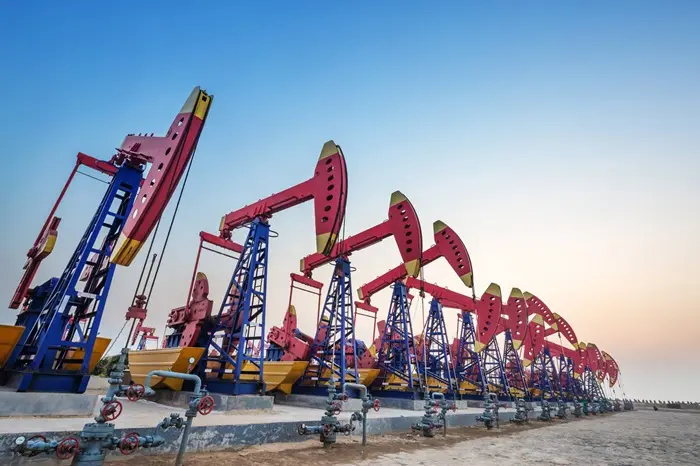Crude oil is a complex mixture of hydrocarbons and other organic compounds. The refining process transforms this raw material into various usable products, the most notable of which is gasoline. Understanding the relationship between crude oil and gasoline production is crucial for grasping the economics and logistics of the oil industry. This article explores how much gasoline can be produced from a barrel of crude oil, examining the refining process, factors influencing yield, and the implications for global energy markets.
Understanding Crude Oil
Crude oil is a naturally occurring liquid found in geological formations beneath the Earth’s surface. It is composed primarily of hydrocarbons, which are molecules consisting of hydrogen and carbon. The composition of crude oil varies significantly depending on its source, with different types having distinct proportions of hydrocarbons, sulfur, metals, and other compounds.
Composition and Types of Crude Oil
Crude oil is classified based on its density (light or heavy) and sulfur content (sweet or sour). Light crude oil has a higher proportion of lighter hydrocarbons, making it easier to refine into gasoline and other high-value products. Heavy crude oil contains more heavy hydrocarbons and requires more complex refining processes.
Light Crude Oil: Generally contains higher percentages of hydrocarbons in the C5 to C12 range, which are suitable for gasoline production.
Heavy Crude Oil: Contains more long-chain hydrocarbons (C20 and above) and higher concentrations of sulfur and other impurities.
The Refining Process
The refining process converts crude oil into finished products, including gasoline, diesel, jet fuel, and others. This process involves several stages, including distillation, conversion, treatment, and blending.
See Also: 7 Largest Crude Oil Producing Countries
The Distillation Process
Distillation is the first step in refining crude oil. The crude oil is heated in a distillation column, where it separates into different fractions based on boiling points. These fractions, or cuts, include gases, naphtha, kerosene, diesel, and residue.
Fractional Distillation
Gases (C1-C4): Includes methane, ethane, propane, and butane.
Naphtha (C5-C12): Primarily used for gasoline production.
Kerosene (C10-C16): Used for jet fuel and heating oil.
Diesel (C15-C18): Used for diesel fuel.
Residue (C20 and above): Used for heavy fuel oil or further processing.
Conversion Processes
After distillation, conversion processes such as catalytic cracking, hydrocracking, and coking are used to break down heavy fractions into lighter, more valuable products.
Catalytic Cracking: Uses a catalyst to break large hydrocarbon molecules into smaller ones, producing gasoline and other lighter products.
Hydrocracking: Uses hydrogen and a catalyst to break heavy hydrocarbons into lighter ones, producing high-quality gasoline and diesel.
Coking: Converts heavy residues into lighter products and petroleum coke.
Treatment and Blending
The final steps involve treating the refined products to remove impurities and blending them to meet specific quality standards. Gasoline, for example, is blended with additives to improve performance and meet environmental regulations.
Factors Influencing Gasoline Yield
Several factors influence the amount of gasoline that can be produced from a barrel of crude oil. These include the type of crude oil, the configuration of the refinery, market demand, and technological advancements.
Type of Crude Oil
As mentioned earlier, light crude oil is more suitable for gasoline production due to its higher proportion of light hydrocarbons. In contrast, heavy crude oil yields less gasoline and requires more complex and expensive refining processes.
Refinery Configuration
Refineries are designed with specific configurations to optimize the production of desired products. A refinery optimized for gasoline production will have more catalytic cracking units, while one focused on diesel might have more hydrocracking units. The complexity and sophistication of a refinery also play a significant role in determining gasoline yield.
Market Demand
Market demand for different petroleum products can influence refining operations. For instance, if there is high demand for gasoline, refineries may adjust their operations to maximize gasoline output, even if it means producing less of other products.
Technological Advancements
Advances in refining technology have continually improved the efficiency and yield of gasoline production. New catalysts, better process controls, and innovative conversion techniques have increased the amount of gasoline that can be produced from a barrel of crude oil.
Typical Gasoline Yield from a Barrel of Crude Oil
On average, a 42-gallon barrel of crude oil produces about 19 to 20 gallons of gasoline. This yield can vary depending on the factors mentioned above, but it provides a general benchmark for understanding gasoline production.
Detailed Breakdown of Products from a Barrel of Crude Oil
A barrel of crude oil typically produces the following products:
Gasoline: 19-20 gallons
Diesel: 11-13 gallons
Jet Fuel: 4-5 gallons
Liquefied Petroleum Gases (LPG): 1-2 gallons
Heavy Fuel Oil: 6-8 gallons
Other Products: 1-2 gallons (including asphalt, lubricants, and petrochemical feedstocks)
Efficiency and Losses
It’s important to note that the refining process is not 100% efficient. There are losses due to energy consumption, waste products, and the inherent limitations of the conversion processes. These losses are accounted for in the overall yield calculations.
Economic and Environmental Implications
The yield of gasoline from crude oil has significant economic and environmental implications. Understanding these impacts helps in making informed decisions about energy production, consumption, and policy.
Economic Impact
The price of crude oil and refined products is influenced by the yield of gasoline. Higher gasoline yields can lead to lower production costs and potentially lower prices at the pump. Conversely, lower yields or increased demand can drive up prices.
Environmental Impact
Refining crude oil into gasoline and other products has environmental consequences. These include greenhouse gas emissions, air pollution, and the production of hazardous waste. Advances in refining technology and stricter environmental regulations aim to mitigate these impacts, but challenges remain.
Policy Considerations
Governments and regulatory bodies play a crucial role in shaping the refining industry. Policies aimed at reducing carbon emissions, promoting alternative fuels, and improving fuel efficiency can influence the demand for gasoline and the configuration of refineries.
Future Trends in Gasoline Production
The future of gasoline production is shaped by several trends, including the transition to renewable energy, advancements in refining technology, and changes in consumer behavior.
Transition to Renewable Energy
The global push towards renewable energy sources is likely to reduce the demand for gasoline over time. Electric vehicles, biofuels, and hydrogen fuel cells are some of the alternatives gaining traction. However, the transition will take time, and gasoline will remain a significant fuel source for the foreseeable future.
Advancements in Refining Technology
Continuous improvements in refining technology will enhance gasoline yields and reduce environmental impacts. Innovations such as carbon capture and storage (CCS), advanced catalysts, and more efficient processes will play a key role in the industry’s evolution.
Changes in Consumer Behavior
Consumer preferences are shifting towards more fuel-efficient vehicles and alternative transportation options. This change will influence the demand for gasoline and, consequently, the refining strategies employed by the industry.
Conclusion
The amount of gasoline produced from a barrel of crude oil is a crucial aspect of the oil industry, impacting economics, environment, and policy. On average, a barrel of crude oil yields about 19 to 20 gallons of gasoline, although this can vary based on crude oil type, refinery configuration, market demand, and technological advancements. Understanding these factors provides valuable insights into the complexities of gasoline production and its broader implications. As the world transitions to renewable energy sources and continues to innovate in refining technology, the landscape of gasoline production will undoubtedly evolve, presenting both challenges and opportunities for the industry.
Related topics:































